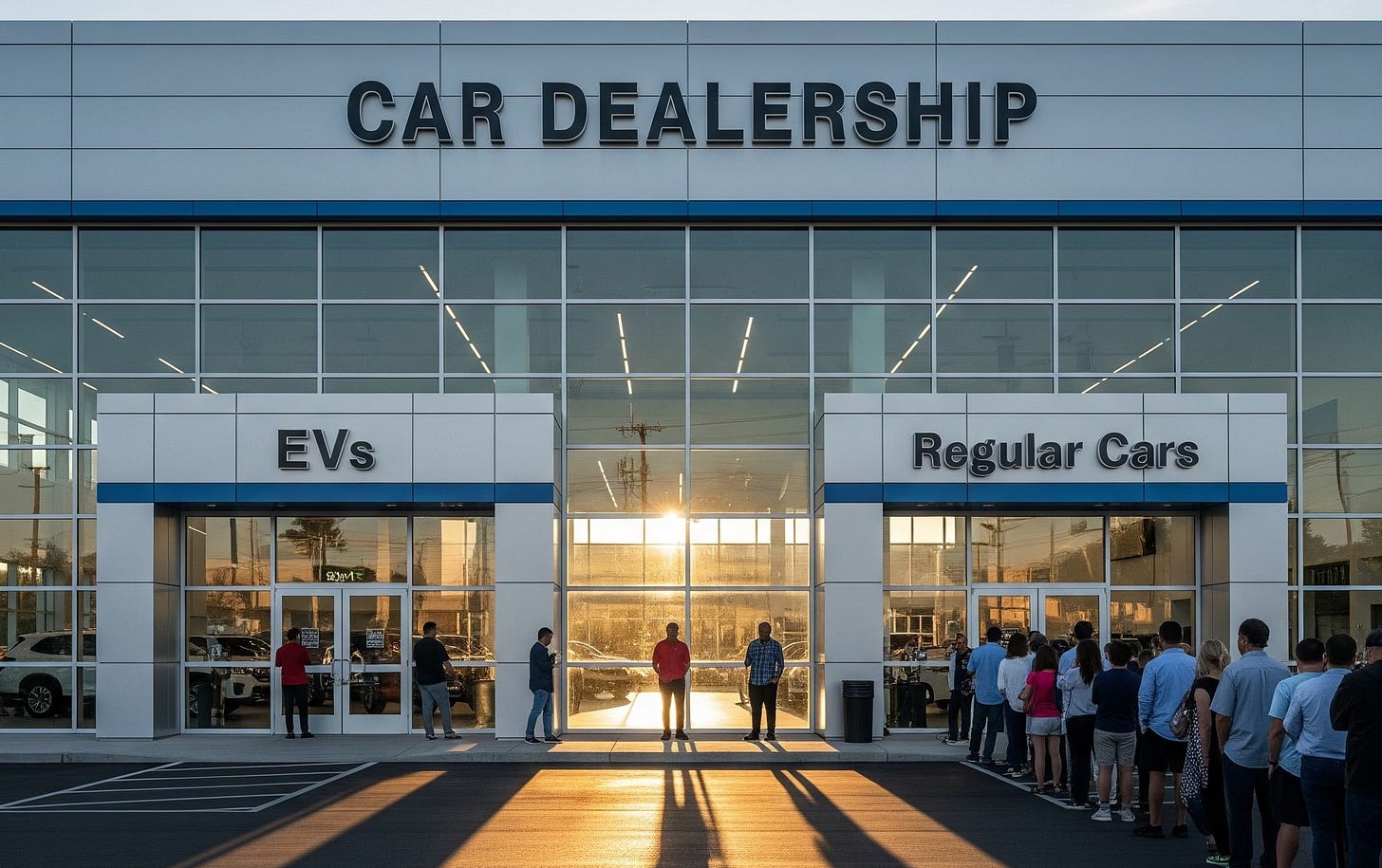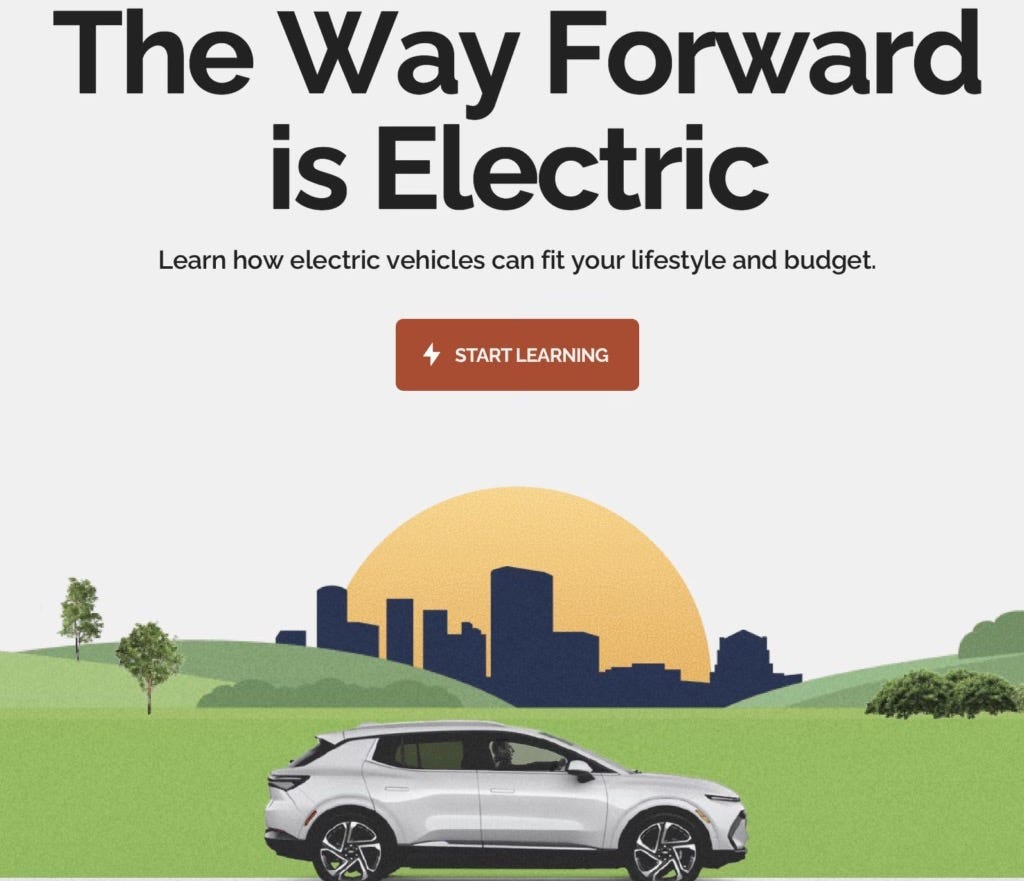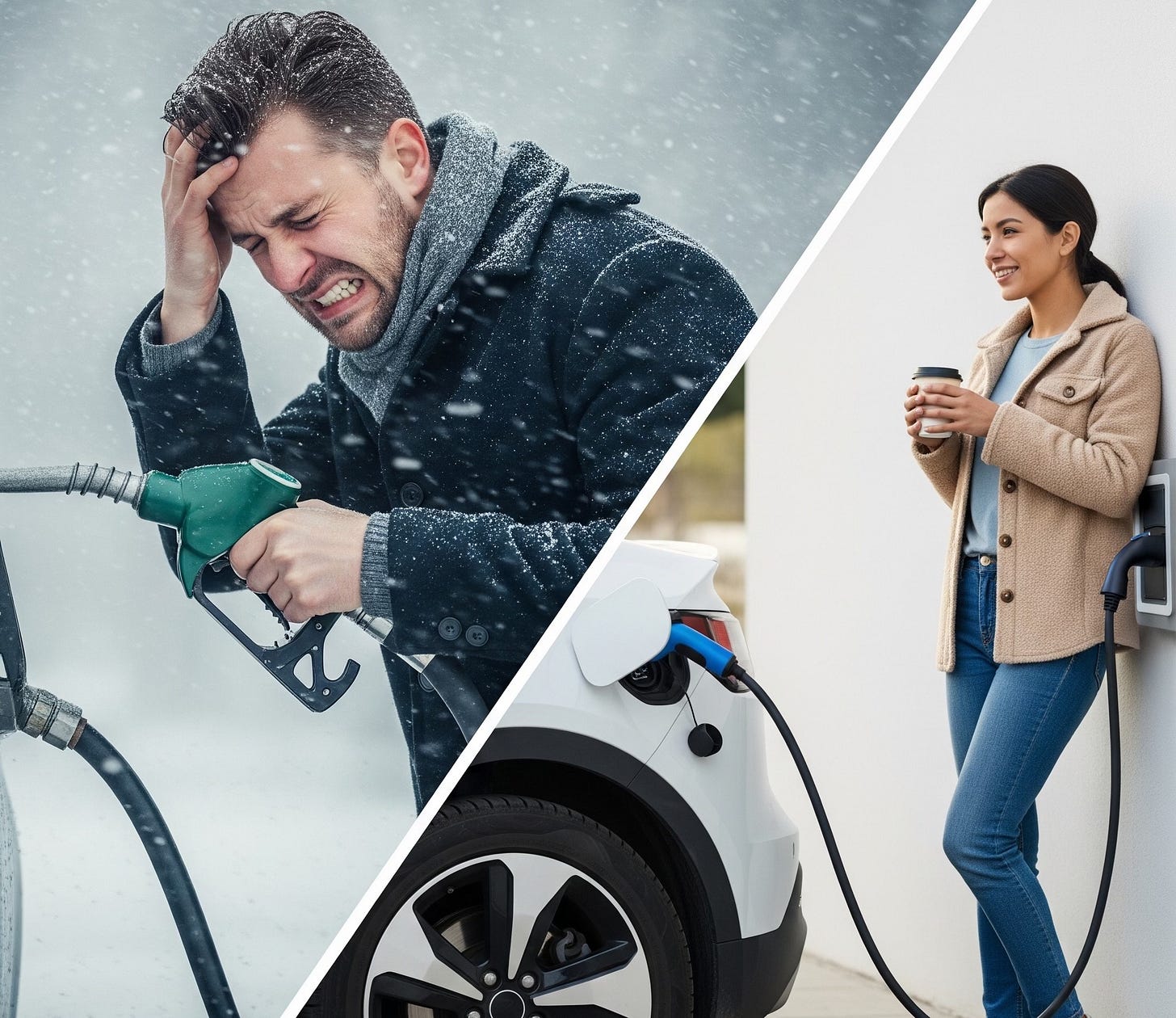Picture this: someone invents a car that never needs oil changes, starts instantly in subzero temperatures, costs pennies to fuel, and accelerates like it’s been fired from a cannon. The logical response should be: Where do I sign? Instead, the typical customer reaction is: “Yeah, but what if I need to tow a bunch of stuff to Alaska tomorrow?”
This is the upside-down world of EV marketing in the USA - where the industry has managed to take a massive upgrade in modern transportation and sell it like a compromise, an apologetic nod to your conscience, rather than the next car you’re desperate to buy.
The Numbers Don’t Lie (But They Sting)
Every year, the American Automobile Association checks the pulse of America’s appetite for EVs. This year’s results suggest that we’ve been taking EV Ozempic. Only 16% of U.S. adults say their next car will likely be electric - down from 25% just three years ago. Meanwhile, the “unlikely” or “very unlikely” crowd has ballooned from 51% in 2022 to 63% now.
The timing couldn’t be more ironic. EVs have finally become good cars - with ranges covering most people’s weekly driving, charging times not much longer than a coffee break, and features that make ICE cars feel like steam engines. Yet Americans are backing away as if EVs have fangs.
Even BloombergNEF, historically bullish on the transition, dramatically cut both short- and long-term EV adoption forecasts for the first time in its history.
Admittedly, this isn’t the rosiest take on the situation. The New York Times published a slightly more optimistic piece yesterday, and fast public EV charger installations are climbing in the US at a good tick (although given how long it typically takes for a charging station to be installed and brought online, this may be more a reflection of optimism a couple of years ago rather than a reflection of current sentiment).
A Perfect Storm of Self-Inflicted Wounds
Nevertheless, the political headwinds are brutal. The Trump administration didn't just stop promoting EVs - they've declared war on them. The $7,500 federal tax credit for buying or leasing an EV has been eliminated, charging infrastructure funding has been suspended, and many states have imposed annual fees just for driving electric. At the same time, the federal government is bending over backwards to subsidize and promote fossil fuels and the technologies that use them (such as coal burning power plants, and yes, internal combustion engine cars) as not only better, but implicitly “more American”.
But the uncomfortable truth is this: the political assault on EVs has been so effective at least partly because the industry has left itself vulnerable. It built its entire value proposition on government incentives, environmental guilt and potential long-term cost-savings rather than on the simple fact that EVs are better cars.
They took a product that should sell itself - instant torque, whisper-quiet operation, no maintenance, home refueling - and somehow made it feel like doing your taxes. Typical pitch: “Well, range anxiety exists, charging can be tricky, EVs cost more up front (though hopefully not in the long-term), but you’re doing the right thing!”
It’s like trying to sell iPhones by leading with “the battery might die” instead of “you can video chat with anyone on Earth.”
Every other technology revolution has focused on making the old way look obsolete. IBM didn’t sell personal computers by apologizing for the death of typewriters. Samsung and LG didn't push 4K flat screens while tearfully eulogizing those 200-pound TV sets that took three people to move.
But EV marketers seem determined to make electric cars feel like an inconvenient favor you're doing for the planet.
The Tesla Paradox
Tesla, ironically, created this mess as much as it revolutionized the space. It proved EVs could be desirable - fast, high-tech, aspirational. And it wasn’t afraid to say so. For years, Tesla was the only game in town, which meant that "EV owner" and "Tesla owner" were broadly synonymous. This worked brilliantly when it was the scrappy underdog taking on Detroit. It works less well when your CEO becomes as polarizing as the cars were impressive (and when not everything you have promised actually turns out to be true.)
Meanwhile, traditional automakers aren’t helping. Partly to separate themselves from Tesla, but also because of the need to protect their existing (and still more profitable ICE & hybrid cars), they landed in a place where their messaging reads like an apology: “Our SUV is just like our gas SUV… but electric!” - about as inspiring as describing the iPhone as being “just like a phone, but with a screen you can poke."
What Actually Works
Here's where it gets interesting: the groups that have embraced EVs aren't the ones you'd necessarily expect from the marketing. Fleet buyers - companies managing vehicle costs with spreadsheets rather than emotions - have adopted EVs at rates that should make environmental activists weep with relief. Why? Because they did the math. Lower fuel costs, reduced maintenance, tax advantages, and predictable operating expenses make EVs a no-brainer for anyone whose job depends on maximizing transportation efficiency.
Similarly, in wealthy communities with robust charging infrastructure, EV adoption rates approach those of Norway. The difference isn't just income - it's that these buyers have direct experience with EVs through friends and neighbors. They understand the actual benefits rather than the theoretical ones.
The pattern is unmistakable: when people understand what EVs actually offer rather than what they supposedly lack, adoption follows naturally.
Enter Electric For All: A Good Idea With the Wrong Story
In this climate, along comes Electric For All, a $43.5 million campaign from Veloz and Electrify America which launched a couple of weeks ago, designed to make EVs feel accessible and inevitable. The centerpiece of the campaign is a series of short video spots voiced by Nick Offerman. On paper, it looks like great: slick design, multilingual reach, incentive finders, EV shopping tools, outreach to underserved communities, and a sprinkling of down-to-earth Hollywood glamour.
The problem, in my humble opinion? It still makes EVs sound like homework.
The campaign leans hard on affordability, rebates, and environmental virtue:
“Save up to $10,000 over your car’s life.”
“Claim your state and federal incentives.”
“Do good for the planet.”
All fine points - but these don’t create the one thing gas drivers need to switch: FOMO.
Electric For All barely hints at the things that actually make ICE owners jealous:
The adrenaline jolt of instant torque.
Whisper-quiet journeys.
Waking up every morning to a warm car with a full “tank” of electrons.
One-pedal driving and regenerative braking that make ICE cars feel prehistoric.
Barely ever having to pay maintenance costs.
It’s an information campaign rather than an aspirational campaign focused on driving desire. Electric for All’s tools help those already leaning electric, but it seems unlikely that anything in the messaging will make a gas driver wake up wondering why they’re still clinging to a fuel nozzle.
How to Fix the Story
The EV industry should stop playing defense and go on offense. Instead of constantly addressing range anxiety, create refueling FOMO - make people jealous they're still having to stop at gas stations. Instead of apologizing for charging gaps, flaunt the luxury of never pumping gas in a snowstorm again.
The messaging needs to shift from "EVs are almost as good as gas cars" to "Gas cars are so last century." It's the difference between positioning your product as an acceptable alternative versus positioning it as a must-have upgrade.
Consider how the narrative might change: "While you're standing in the cold at 7 AM pumping gas, EV owners are starting their day with a fully charged car that was warming up in their garage."
Or: "Remember when everyone said they'd never give up their Blackberry for an iPhone?"
Every other tech revolution sells itself by making the old way look ridiculous. Uber shows frustrated people standing in the wind & rain trying to hail a cab; Apple’s cool & casual ‘Mac’ guy was comically contrasted with the stiff, suit wearing ‘PC’ guy. They show a better future and make you feel foolish for sticking to the past.
The Long Game: From Homework to Upgrade
EVs don't have a technology problem - they have a story problem. The technology is ready and progressing at pace, the infrastructure is improving rapidly, and the economics are increasingly compelling. What's missing is a narrative that makes people excited about the future of driving, rather than feeling anxious about giving up the past.
The automotive industry has always been about selling dreams as much as transportation. People don't just buy cars; they buy freedom, status, capability, and identity. The EV industry has somehow forgotten this, focusing on specifications and environmental benefits while ignoring the emotional and practical reasons people actually make purchasing decisions.
The long-term future of transportation is still electric - that's not in question. What's uncertain is whether Americans will race toward that future or get dragged there kicking and screaming. The difference comes down to desire versus duty.
Right now, the EV industry is stuck selling vegetables to kids who want candy. But electric cars aren't vegetables – they are the candy. They're faster, quieter, cheaper to run, and never need an oil change. The industry just hasn't figured out how to make them feel like candy.
Change the narrative, and the sales will follow. Continue to treat EVs like medicine instead of the genuinely superior machines they are, and don't be surprised when consumers keep choosing the familiar rumble of combustion over the silent surge of electrons.





